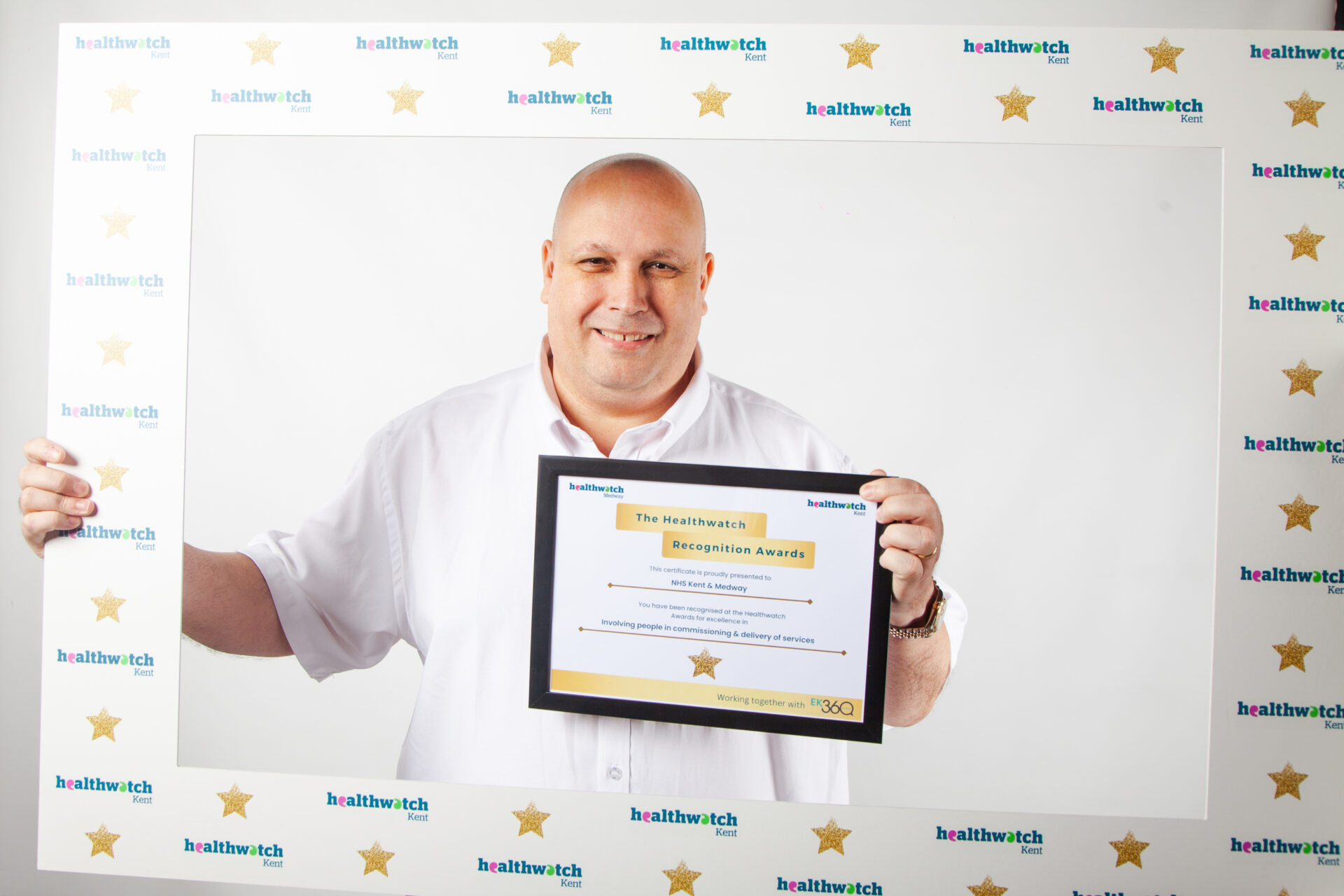Patient and Public Involvement
Patients have been involved in the design and implementation of the LOCOMOTION study right from the start, when the study was first designed. They have provided the study team with first-hand information and advice, relating to the current services available to help them, what is needed, and the types of symptoms they are experiencing. These first-hand accounts from patients remain essential as the study progresses. Patient volunteers are involved at every stage and representatives are present at all governance group meetings.
The LOCOMOTION study is funded by the National Institute for Health and Care Research (NIHR). The NIHR actively encourage patient and public involvement (PPI) in research and request details of the PPI in our regular progress reports. On their ‘I want to help with research’ page, there is information about the benefits of PPI in research, and how patients and the public can learn about health research and get involved.
The video below is an animation outlining what PPI in research is and why it is important, and how PPI is integrated into the LOCOMOTION Long COVID study including the activities that PPI support and what this helps achieve.
The patient and public groups helping lead the LOCOMOTION study are the:
Patient Advisory Group (PAG)
The PAG is a group of 9 individuals from around the UK who have had COVID-19. As a result, they are suffering from a wide variety of symptoms which affect their normal activities such as work, family life, and leisure activities. They meet on a regular basis and are supported by a PPI Manager from the University of Leeds. PAG members come from a range of backgrounds and have a wealth of experience, not just in living with Long COVID (LC). Members have experience working with organisations such as the NIHR and charities on issues such as funding, patient advocacy, peer support, and effective PPI in research. The PAG Co-Leads are:
- Clare Rayner – Profile on Clare's background and involvement within Locomotion and other Long COVID groups.
- Ruairidh Milne – Profile on Ruairidh's background and role within Locomotion.

Clare (left) and Ruairidh (right)
Role of the PAG
The PAG’s role is to review study progress, make sure the research is answering the most relevant/urgent issues in LC care, and ensure the patient voice is central to the study. PAG members are not just patients, they are co-researchers on the study whose input is vital to the study design, development, and delivery.
![]()
PAG representatives take part in all LOCOMOTION governance group and workstream meetings, providing an invaluable and unique insight from their experiences of LC. They work collaboratively with the researchers and provide rigorous critique. Involvement has included attending research planning meetings and inputting into the design of the research protocol. PAG members provide input into the work conducted in each work package, in addition to designing questionnaires and other patient information.
In the video below (recorded in January 2022), Clare (PAG Co-Lead) discusses her involvement within the PAG. She discusses how involvement in research as a patient is a novel experience for her, but her role is well supported by a PPI manager. Clare also talks about how PAG members are treated as equals within the research and their voices are heard.
Examples of PAG involvement
Publication Authorship - All of our Scientific Publications have at least one patient co-author on the writing team, helping ensure the patient perspective is included. There is a concerted effort to include patient co-authors throughout the entire writing process, from the initial draft through to final approval of each manuscript.
Conducting a Clinic Audit - Our PAG were encouraged and supported by the project leads to conduct a PAG-led audit of the LC clinics participating in the study. The aim of the audit was to understand clinic structures and procedures, the assessments and tests conducted, and clinic constraints. From the audit, priority recommendations and suggested Quality Improvement Collaborative (work package 1.1) topics were generated, which were then relayed to the wider study team at a subsequent workshop.
Co-producing the Brief Guide - Feedback from members of our PAG was instrumental in the creation our 'patient friendly' Brief Guide video and leaflet, that they co-produced with clinical research fellows and the project manager. The Brief Guide was created to give potential participants an overview of what the study is and what participation would involve, in a simpler and more aesthetic way.
Advising on Resource Links - In addition to the Outputs of our study, there is other valuable information about LC in the resources section on our For Patients page. The section contains links to websites that have collated a range a great resources on LC symptom management, support groups, work, benefits, finances, and more. Our communications group determined the list of resource links in collaboration with members of our PAG, who informed the group what resources they have personally found useful.
Analysing Interview Findings - Work package 1.4 is exploring the vocational (work) needs of people with LC, with the purpose of supporting people to safely return to work, and stay in work despite living with LC. As we already know that work can be a vital part of recovery, and that ‘good work’ is good for health. Through interviews with LC patients, health-care professionals, and key informants (such as occupational health, human resource, and managerial professionals), we will establish the key enablers and barriers to working with LC. PAG representatives on this work package have been involved in several stages, from designing interview schedules to co-analysing interview transcripts, and regularly review identified themes as a sense-check for clarity and accuracy. PAG members have kindly shared their own personal experiences of returning to work and this has informed the development of themes and the refinement of findings. The PAG team will also play an important role in designing the overall vocational rehabilitation programme, for roll-out across the 10 participating clinics. We intend to start co-designing this with our PAG colleagues soon, to ensure, from the start, that it is meets the needs of people with lived experience and that it is an intervention that may have helped them at an earlier stage in their LC journey.
Boosting Study Recruitment - Work package 2.1 is aiming to understand the relationship between triggers and LC symptoms, using wearable technology that monitors activity. To support the recruitment of participants to this work package, a PAG member wrote a patient testimonial about how participating in the study had benefited them, through finding out what was triggering their symptoms and being able to make beneficial adjustments.
Questionnaire Development - Work package 3.2 aims to assess the cost-effectiveness of different care pathways using, amongst other data, a Health Economics Questionnaire which is completed every 1 to 3 months by patients (who are participating in the study) in the LC clinics. The questionnaire includes questions on health and social care service utilisation (and the personal costs of this), prescription of medications, and employment status. It was developed through weekly meetings of the work package team, which includes PAG representatives who provided valuable input from a patient perspective on what questions should be asked and how they should phrased.
Impact of PAG members outside of Locomotion
Our PAG members are also using their experiences and knowledge to actively contribute to other excellent LC groups and initiatives. An example of this is, three of our PAG members are involved in the Kent and Medway ICB patient reference group, which helps ensure the services continue to meet the changing needs of people with LC. The service recently won a Healthwatch Medway Recognition Award for their work with people who have LC to develop their LC service (Read more about this here).

Darren Winch (PAG Member) accepting the award on behalf of the NHS Kent and Medway team.
Patient Advisory Network (PAN)
The PAN is a network of patient representatives. This is group formed of two patients from each of the 10 NHS sites which are taking part in the study. They provide site-specific assistance and feedback to the researchers within each area. The study has sites in England, Scotland, and Wales.
External Advisory Group (EAG)
The EAG consists of members of the study team, independent experts, and public partners. Members are from across the UK and internationally. Our EAG meets every 6-months, to challenge and provide feedback on our work to date and provide advice on upcoming work. EAG members have informative discussions with our study team to identify and prioritise areas where we can make the most progress. Members are from a wide variety of roles and professions, providing a range of perspectives to the group discussions.
![]()
